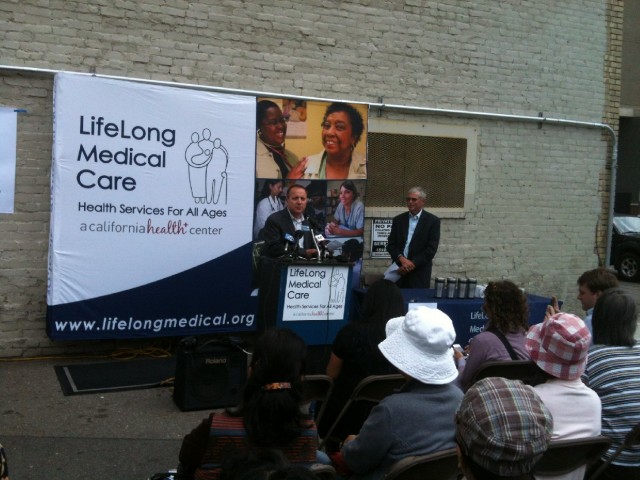Schrago's father died two years ago. Her mother has been buying health insurance for herself and Schrago's two teenage brothers — and paying $1,200 a month in premiums. "Starting tomorrow, she'll be able to register with Covered California and get premium assistance for the three of them that will cut her payment in half," Schrago said.
The Oakland crowd seemed pretty well-informed, but on the eve of the opening, here are five common questions, answered:
1) What do I need to do? If you already have insurance through your job or a public program such as Medi-Cal or Medicare, you don't need to do anything. You already have insurance and nothing about your situation will change. The new marketplace is for people who are uninsured or who are buying insurance for themselves or their families, people like Schrago's mother. About half of people currently buying insurance on their own are expected to get a subsidy, according to a study from the Kaiser Family Foundation.
2) How much will the insurance cost me? If you are one of those people buying insurance on the individual market, you can calculate your premium on the Covered California website. Insurance companies can only use three factors to set premiums: your age, where you live and number of people in your family. Statewide, the average premium is about $375, but that will vary according to those three factors, plus the level of coverage you choose. Be sure to pay attention to details, because some of the cheaper plans have higher deductibles and other out-of-pocket costs.
[Related: KQED's Obamacare Explained: A Guide for Californians]
3) What about subsidies? People earning from 138-400 percent of poverty (roughly $15,500-$46,000 for an individual; $32,000-$94,000 for a family of four) are eligible for subsidies. Again, the premium calculator on Covered California will show how much of a subsidy you may qualify for.
4) What about Medi-Cal? If your income is below 138 percent of poverty, you are eligible for the Medi-Cal expansion. Right now, people who are not disabled and do not have children are not eligible for Medi-Cal — no matter how low their income is. Starting Jan. 1, these childless adults will be eligible for the federal-state health insurance program, if their income is low enough to qualify.
5) Why do I need to buy health insurance, anyway? The Affordable Care Act includes an individual mandate that requires just about everyone to have health insurance or pay a penalty. In 2014, that penalty is $95 or 1 percent of income, whichever is greater. But the penalty goes up from there to $695 or 2.5 percent of income in 2016.
A Kaiser Family Foundation poll released over the weekend showed just over half the public (51 percent to be exact) said they don't have enough information to understand how the law will impact their family. If that's you, check out our straightforward guide, Obamacare Explained — just for Californians.
